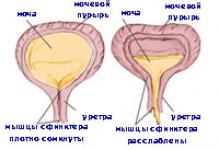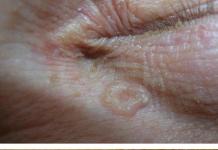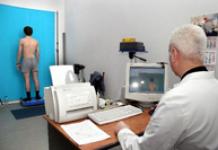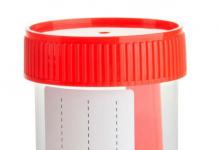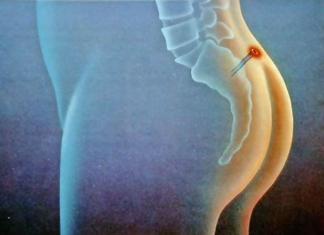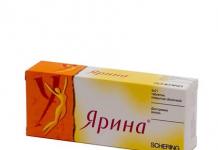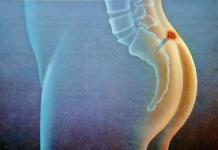Compound
one capsule contains carvedilol - 6.25 mg or 12.5 mg, or 25 mg.
Excipients: calcium stearate, potato starch, lactose.
Composition of the capsule shell for a dosage of 6.25 mg: gelatin, glycerin, sodium lauryl sulfate, purified water, titanium dioxide E-171, dyes brilliant blue E-133 and quinoline yellow E-104.
Composition of the capsule shell for a dosage of 12.5 mg: gelatin, glycerin, sodium lauryl sulfate, purified water, titanium dioxide E-171.
Composition of the capsule shell for a dosage of 25 mg: gelatin, glycerin, sodium lauryl sulfate, purified water, titanium dioxide E-171, charming red dye E-129.
Description
Hard gelatin capsules of cylindrical shape with hemispherical ends with a green cap and a white body (capsules with a dosage of 6.25 mg).
Hard gelatin capsules of cylindrical shape with hemispherical ends of white color (capsules with a dosage of 12.5 mg).
Hard gelatin capsules of cylindrical shape with hemispherical ends with a red cap and a white body (capsules with a dosage of 25 mg).
Pharmacotherapeutic group
Alpha and beta blockers.
CodeATX: C07AG02.
Indications for use
Essential hypertension (mild to moderate), as well as chronic angina pectoris for the prevention of attacks.
Treatment of stable symptomatic mild, moderate and severe chronic failure (class II - IV according to the New York Heart Association (NYHA) classification) of ischemic or cardiomyopathic origin in addition to standard therapy (diuretics, digoxin, ACE inhibitors).
Directions for use and doses
Inside, with a sufficient amount of liquid. The dose is selected individually.
Does not need to be taken with food, but patients with heart failure should take the capsules with food to slow absorption and reduce the incidence of orthostatic reactions.
Arterial hypertension: The recommended dose during the first days of treatment is 6.25 mg 2 times a day, if necessary, increase to 12.5 mg 2 times a day in the next 7-14 days of treatment. The recommended maintenance dose is 25 mg of carvedilol.
If the clinical effect is insufficient, but not earlier than the 14th day of treatment, the dose can be increased to a maximum of 50 mg per day. The maximum single dose is 25 mg, the daily dose should not exceed 50 mg.
Elderly patients
Initial dose: 12.5 mg once daily. In some patients this dose is sufficient to control blood pressure. If effectiveness is insufficient, the dose can be gradually increased at intervals of at least 2 weeks to a maximum dose of 50 mg per day.
Chronic angina
The initial dose is 12.5 mg twice daily for the first two days. Then a dose of 25 mg 2 times a day is recommended. If the effect is insufficient, the dose can be gradually increased at intervals of at least 2 weeks, reaching the highest daily dose of 100 mg, divided into 2 doses.
Elderly patients
As a rule, the dose of 25 mg 2 times a day should not be exceeded.
Chronic heart failure: The dose is selected individually; careful monitoring of the patient is required during dose titration. In patients receiving digitalis preparations, diuretics and ACE inhibitors, their doses should be stabilized before starting treatment with carvedilol. The recommended dose for starting therapy is 3.125 mg 2 times a day for 2 weeks. If well tolerated, the dose is increased at intervals of at least 2 weeks to 6.25 mg 2 times a day, then to 12.5 - 25 mg 2 times a day (for body weight less than - maximum dose is 25 mg 2 times a day, with a weight greater than 50 mg 2 times a day). The dose should be increased to the maximum dose that is well tolerated by the patient. Before each dose increase, the physician should evaluate the renal function of these patients and check for worsening heart failure or symptoms of vasodilation. Short-term worsening of heart failure, vasodilation, and fluid retention can be managed by adjusting the dose of the diuretic or ACE inhibitor, as well as changing or briefly discontinuing carvedilol therapy.
If treatment is interrupted for more than 1 week, then its use is started with a lower dose and then increased according to the recommendations. If treatment is interrupted for more than 2 weeks, then its use begins with a dose of 3.125 mg 2 times a day, followed by dose selection according to the recommendations.
Treatment should begin with small doses, gradually increasing to an adequate clinical dose. If a dose is missed, the drug should be taken as soon as possible, but if the time for taking the next dose approaches, take only that dose, without doubling it. Discontinuation of the drug should be done gradually over 1-2 weeks (especially in patients with angina pectoris).
If the drug has not been taken for more than 2 weeks, treatment must be resumed, starting with the lowest doses.
Patients with chronic heart failure and renal impairment
The required dose must be determined individually for each patient. Based on the pharmacokinetic parameters of carvedilol, no dosage adjustment of carvedilol is required in patients with heart failure or moderate to severe renal impairment (see section "Pharmacokinetics").
Patients with liver dysfunction
Carvedilol-MIC is contraindicated in patients with clinical manifestations liver failure(see sections “Pharmacokinetics”, “Contraindications”).
Elderly patients
Elderly patients may be quite susceptible to the effects of carvedilol and should be monitored more closely. As with other beta blockers, carvedilol should be withdrawn gradually, especially in patients with coronary disease.
Children
The safety and effectiveness of carvedilol in children and adolescents under 18 years of age have not been established.
Side effect
Generalized Security Profile
The frequency of side effects does not depend on the dose, with the exception of vertigo or dizziness, visual disturbances, and bradycardia.
List of side effects
Risk adverse reactions associated with carvedilol are similar for all indications.
Exceptions are provided at the end of this section.
Side effects, depending on frequency, are divided into the following groups:
Very common (≥1/10); Common (≥1/100 to Uncommon (≥1/1000 to Rare:(≥1/10000 to Very rare:(Frequency unknown (cannot be estimated from available data).
Within each group side effects drugs are presented in order of decreasing importance.
Infections and infestations
Common: bronchitis, pneumonia, upper respiratory tract infections, urinary tract infections.
Blood and lymphatic system disorders
Common: anemia; rare: thrombocytopenia; very rare: leukopenia.
Immune system disorders
Very rare: hypersensitivity ( allergic reactions), severe skin reactions (eg, erythema, Stevens-Johnson syndrome, toxic epidermal necrolysis).
Metabolic and nutritional disorders
Frequent: weight gain, hypercholesterolemia, impaired control of blood glucose levels (hyperglycemia, hypoglycemia) in patients with diabetes mellitus; uncommon: hypertriglyceridemia, hypokalemia.
Nervous system disorders
Very common: dizziness, headache; frequent: fainting, presyncope; uncommon: paresthesia, hypokinesia, increased sweating.
Mental disorders
Frequent: depression, depressed mood; Uncommon: insomnia, nightmares, hallucinations, confusion; very rare: psychosis, impaired concentration, pathological thinking, emotional lability.
Visual disorders
Common: blurred vision, decreased tear production (dry eyes), eye irritation.
Hearing and labyrinth disorders
Uncommon: tinnitus.
Heart disorders
Very common: heart failure; common: bradycardia, edema, fluid retention, fluid retention; uncommon: atrioventricular block, angina, tachycardia.
Vascular disorders
Very common: arterial hypotension; common: orthostatic hypotension, peripheral circulatory disorders (cold extremities, peripheral vascular disease, intermittent claudication, Raynaud's syndrome).
Disorders of the respiratory system and organs chest and mediastinum
Common: shortness of breath, pulmonary edema, asthma (in predisposed patients); rare: nasal congestion.
Gastrointestinal disorders
Frequent: nausea, diarrhea, vomiting, dyspepsia, abdominal pain; uncommon: constipation; rare: dry mouth.
Disorders of the liver and biliary tract
Rare: increased bilirubin levels in the blood; very rare: increased levels of alanine aminotransferase (ALT), aspartate aminotransferase (AST) and gamma-glutamyltransferase (GGT).
Skin and subcutaneous tissue disorders
Uncommon: skin reactions (allergic exanthema, dermatitis, urticaria, itching, exacerbation of psoriatic rashes, lichen planus-like reaction), alopecia.
Musculoskeletal and connective tissue disorders
Common: pain in the limbs.
Frequent: acute renal failure and impaired renal function in patients with diffuse peripheral vascular disease and/or impaired renal function, frequent urination; very rare: involuntary urination in women.
Reproductive system and breast disorders
Uncommon: erectile dysfunction.
General complications and reactions at the injection site
Very common: asthenia (including fatigue); Frequent: pain.
The following potentially important events have been reported in ≤0.1% of patients: complete AV block, bundle branch block, myocardial ischemia, cerebrovascular accidents, seizures, migraine, neuralgia, paresis, anaphylactoid reaction, alopecia, exfoliative dermatitis, amnesia, GI bleeding , bronchospasm, pulmonary edema, hearing loss, respiratory alkalosis, increased BUN levels, decreased HDL, pancytopenia and the appearance of atypical lymphocytes.
According to post-marketing studies, due to the beta-blocking properties of carvedilol, the emergence of latent diabetes mellitus or worsening overt diabetes, inhibiting blood glucose regulation. Monitor for occasional hypoglycemia.
Post-marketing studies
Metabolism, metabolic disorders
Based on the beta-blocking properties, it is possible that latent diabetes mellitus may become apparent or overt diabetes may worsen, or blood sugar regulation may be inhibited (see Precautions). Monitor for occasional hypoglycemia.
Dysfunction of the skin and subcutaneous adipose tissue
Alopecia.
Severe adverse skin reactions such as toxic epidermal necrolysis and Steven-Johnson syndrome (see Precautions).
Renal and urinary tract disorders
Isolated cases of urinary incontinence in women have been reported, which resolved after discontinuation of the drug.
Description of selected adverse reactions
Dizziness, fainting, headache and asthenia are usually characterized by mild to moderate severity and are most likely at the beginning of treatment.
In patients with chronic heart failure, increased symptoms and fluid retention may occur when the dose of carvedilol is increased.
Heart failure is a very common adverse reaction in both placebo-treated (14.5%) and carvedilol-treated (15.4%) patients with left ventricular dysfunction after acute heart attack myocardium.
During treatment with carvedilol, reversible deterioration of renal function has been observed in chronic heart failure in patients with low blood pressure, coronary artery disease and diffuse peripheral vascular disease and/or pre-existing renal failure.
If the listed adverse reactions occur, as well as reactions not listed in the package insert, you should consult a doctor.
Precautionary measures
Due to insufficient data, Carvedilol-MIC should not be used:
In children; with unstable or secondary hypertension; with unstable angina; with complete interventricular block; at the final stage of peripheral arterial circulatory disorders, since in these patients beta-adrenergic receptor blockers cause symptoms of arterial insufficiency or may worsen them; at fresh heart attack myocardium; with a tendency to lower blood pressure when changing position (orthostatic disorders); with simultaneous treatment with certain medications that lower blood pressure (alpha1 receptor antagonists).
Discontinuation of therapy
Patients with coronary artery disease who are being treated with carvedilol should be advised not to abruptly discontinue therapy. After abrupt withdrawal of beta blockers in patients with angina, cases of progression of angina, myocardial infarction and ventricular arrhythmias have been reported. The last two complications can occur both after an exacerbation of angina pectoris and during remission. As with other beta blockers, if carvedilol is planned to be discontinued, the patient should be carefully assessed and advised to minimize physical activity. If possible, you should stop taking carvedilol for 1-2 weeks. If angina worsens or acute coronary insufficiency develops, it is recommended that carvedilol be resumed, at least temporarily. Because coronary artery disease is common and can be silent, it is recommended that abrupt discontinuation of carvedilol be avoided, even in patients receiving it only for the treatment of hypertension or heart failure.
Bradycardia
Carvedilol may cause bradycardia. If the heart rate decreases below 55 beats per minute, the dose of carvedilol should be reduced.
Hypotension
9.7% of patients with heart failure receiving carvedilol experienced hypotension and 3.4% experienced syncope compared with 3.6% and 2.5% of patients receiving placebo, respectively. The risk of these effects was greatest during the first 30 days of treatment, which corresponds to the titration phase. Patients with decompensated heart failure, electrolyte imbalance, low blood pressure and/or old age should be under close medical supervision for 2 hours after taking the first dose or after taking the first increased dose due to the risk of sudden drop in blood pressure and syncope. The risk of these complications can be reduced by prescribing the drug in small initial doses and taking it with food. In patients taking blockers concomitantly calcium channels(verapamil or diltiazem), other antiarrhythmic drugs, careful monitoring of the electrocardiogram and blood pressure is necessary.
Chronic heart failure
Increased doses of carvedilol may result in increased symptoms of heart failure or fluid retention. In these cases, it is recommended to increase the dose of diuretics without increasing the dose of carvedilol until a stable state is achieved. Sometimes it may be necessary to reduce the dose of carvedilol or temporarily stop taking it. Such episodes do not prevent successful dosage titration of carvedilol.
In patients with heart failure, if their initial SBP is less than 100 mmHg. Art. or there are concomitant diseases - coronary heart disease, peripheral vascular disease or renal dysfunction, the condition of the urinary system should be checked more often, because Treatment may affect kidney function (usually temporarily). If depression of renal function is observed, the dose of the drug should be reduced or treatment should be discontinued.
Pheochromocytoma
For pheochromocytoma, it is recommended to start an α-blocker before starting any β-blocker. Although carvedilol has both alpha- and beta-blocking pharmacological properties, there is no data regarding its use in this case. It is recommended to prescribe carvedilol with caution to patients in whom this disease is suspected.
Prinzmetal's angina (variant angina)
Non-selective beta blockers may cause chest pain in patients with Prinzmetal's angina. There is no clinical experience with carvedilol in these patients, although it is possible that due to its α-blocking effect, carvedilol could prevent such symptoms. Despite this, it is recommended to use carvedilol with caution in patients with suspected Prinzmetal angina.
Peripheral vascular diseases
Hypersensitivity reaction
When beta blocker therapy is used in patients with severe hypersensitivity reactions or those undergoing desensitization, there is a risk of increased sensitivity to allergens and increased severity of anaphylactic reactions. In these cases, caution must be exercised.
Severe adverse skin reactions(SCAR)
In very rare cases, severe adverse skin reactions such as toxic epidermal necrolysis (TEN) and Steven-Johnson syndrome have been reported during treatment with carvedilol (see Adverse Reactions: Post-Marketing Experience). Carvedilol should no longer be prescribed to patients who have had severe skin reactions (possibly caused by carvedilol).
Psoriasis
Patients with psoriasis (including a family history) should receive carvedilol only after a careful assessment of the risks and benefits.
Diabetes
It is recommended to prescribe carvedilol with caution to patients with diabetes mellitus due to the possible masking or attenuation of early signs of acute hypoglycemia. In these patients with heart failure, carvedilol may be associated with worsening blood glucose control.
Regular monitoring of blood glucose should be carried out, including to identify cases of increased blood glucose, latent diabetes mellitus (see section “Contraindications”),
Thyrotoxicosis
β-blockers may mask symptoms of thyrotoxicosis, such as tachycardia. Abrupt discontinuation of drugs of this class can lead to worsening of symptoms of hyperthyroidism or cause thyrotoxic crisis.
Non-allergic bronchospasm
Patients with a tendency to bronchospastic reactions (for example, Chronical bronchitis, emphysema) beta-blockers should not be prescribed. Carvedilol may be used with caution at the lowest effective dose only in cases where the use of other antihypertensive agents has not been effective. Patients with a predisposition to bronchospastic reactions may experience shortness of breath due to increased airway resistance. At the beginning of treatment or when increasing the dose, such patients should be carefully monitored, reducing the dose when initial signs of bronchospasm appear.
Contact lenses
Patients who wear contact lenses should be aware of the possibility of decreased tear production.
Intraoperative atonic iris syndrome (IFIS)
Intraoperative atonic iris syndrome has been observed during cataract surgery in some patients treated with alpha-1 blockers (carvedilol is an alpha/beta blocker). This variant of small pupil syndrome is characterized by the combination of an atonic iris that becomes deformed during surgical irrigation, progressive constriction of the pupil during surgery despite preoperative dilation with standard mydriatic agents, and possible iris prolapse during phacoemulsification. The ophthalmologist should be alert to possible changes in surgical technique, such as the use of iris hooks, dilatation rings, or viscoelastic agents. Discontinuation of alpha-1 blocker therapy before cataract surgery does not appear to be advisable.
Anesthesia and major surgery
Due to the synergistic negative inotropic effects of carvedilol and antihypertensive agents. general anesthesia with negative inotropic effects, careful monitoring of vital signs during surgery is recommended.
Liver damage
Cases of liver dysfunction have been reported during controlled clinical trials in patients with arterial hypertension and chronic heart failure treated with carvedilol, which was confirmed by resumption of exposure. It was found that liver damage was reversible and manifested itself after short and/or long-term treatment with minor clinical symptoms. No deaths due to liver dysfunction were reported. When the first symptoms/signs of liver dysfunction appear (such as itching, dark urine, persistently decreased appetite, jaundice, pressing pain in the right upper quadrant of the abdomen or unexplained flu-like symptoms) laboratory tests should be performed. If laboratory tests confirm liver damage or jaundice, carvedilol should be discontinued and never prescribed again.
Interaction with other drugs
In patients with chronic heart failure who are treated with cardiac glycosides, diuretics and/or ACE inhibitors, carvedilol should be prescribed with caution (see section "Interactions with other drugs"). This medicine contains lactose, therefore patients with rare hereditary intolerance to lactose, glucose-galactose, malabsorption syndrome or sucrose-isomaltase deficiency should not take this medicine.
Pregnancy and breastfeeding period
The drug is contraindicated for use during pregnancy and lactation.
Interaction with other drugs
When taking the drug Carvedilol-MIC simultaneously with other drugs, the following interactions should be taken into account:
Pharmacokinetic interactions:
Carvedilol is both a substrate and an inhibitor of P-glycoprotein. As a result, when taken concomitantly with drugs transported by P-glycoprotein, the bioavailability of the latter may increase. In addition, the bioavailability of carvedilol may be altered by inducers or inhibitors of P glycoprotein. Inhibitors, like inducers, of CYP2D6, CYP1A2 and CYP2C9 may stereoselectively alter the systemic and/or first-pass metabolism of carvedilol, resulting in increased or decreased concentrations of the R and S stereoisomers of carvedilol in blood plasma (see “Pharmacokinetics” and “Metabolism”). Some examples of similar interactions observed in patients or healthy volunteers are listed below, but this list is not complete. .
Digoxin: With combination therapy with Carvedilol-MIC and digoxin, an increase in digoxin concentrations may occur. The drug Carvedilol-MIC can cause a clinically significant increase in the maximum concentration of digoxin in blood plasma (60%). The AUC of digitoxin increases slightly (+13%). It is recommended to monitor the concentration of digoxin and digitoxin when starting and completing treatment with Carvedilol-MIC, as well as when selecting its dose (see “Precautions”).
Cyclosporine: Two studies in kidney and heart transplant patients receiving oral cyclosporine showed an increase in cyclosporine plasma concentrations after initiation of carvedilol treatment. It turned out that carvedilol increases the absorption of cyclosporine when taken orally by inhibiting the activity of P glycoprotein in the intestine. In an attempt to maintain cyclosporine concentrations within the therapeutic range, a 10-20% reduction in cyclosporine dose was required. Due to pronounced individual fluctuations in cyclosporine concentrations, careful monitoring of cyclosporine concentrations after initiation of carvedilol therapy and appropriate adjustment of the daily dose of cyclosponrin are recommended (see "Precautions").
Rifampicin: In a study of 12 healthy volunteers, rifampicin decreased plasma concentrations of carvedilol, most likely through induction of P glycoprotein, resulting in decreased absorption of carvedilol and a decrease in its antihypertensive effect.
Amiodarone: In patients with heart failure, amiodarone decreased the clearance of the S stereoisomer of carvedilol, possibly due to inhibition of CYP2C9. The average concentration of the R stereoisomer of carvedilol in blood plasma did not change. Therefore, due to the increased concentration of the S stereoisomer of carvedilol, there may be a risk of increased beta-blocking activity.
Fluoxetine: In a randomized crossover study in 10 patients with heart failure, coadministration of fluoxetine, a potent CYP2D6 inhibitor, resulted in stereoselective inhibition of carvedilol metabolism with a 77% increase in mean AUC0-12 for the R(+) enantiomer. However, there were no differences in side effects, blood pressure or heart rate between the two groups.
Pharmacodynamic interactions
Insulin or hypoglycemic agents for oral administration: The effectiveness of insulin or oral hypoglycemic agents can be enhanced. Symptoms of hypoglycemia may be masked or weakened (especially tachycardia). Therefore, diabetics should regularly monitor their blood sugar levels (see "Precautions").
Digoxin: The combined use of beta-blockers and digoxin may result in additional atrioventricular (AV) conduction slowing (see Precautions).
Verapamil, diltiazem, amiodarone or other antiarrhythmic drugs: Like other beta-blockers, oral calcium antagonists such as verapamil and diltiazem, amiodarone and other antiarrhythmic drugs should be taken with extreme caution, as there is a risk of atrioventricular conduction impairment due to simultaneous use. Calcium antagonists and antiarrhythmic drugs should not be administered intravenously during treatment with Carvedilol-MIC.
Drugs that reduce catecho contentlaminoV: Patients taking drugs with beta-blocking properties and agents that reduce catecholamine monoamine oxidase (MAO) levels simultaneously should be closely monitored due to the risk of developing arterial hypotension and/or severe bradycardia.
Like other beta-blockers, the drug Carvedilol-MIC can enhance the pressure-lowering effect of drugs that, in their exposure profile or secondary effects, have a pressure-lowering effect.
Nifedipine: Simultaneous use nifedipinan and the drug Carvedilol-MIC can lead to a severe decrease in blood pressure.
Calcium channel blockers(See "Precautions"). With the simultaneous administration of carvedilol and diltiazem, isolated cases of conduction disturbances were observed (rarely with disturbances in hemodynamic parameters). As with other drugs with beta-blocking properties, ECG and blood pressure monitoring is recommended when oral carvedilol is administered concomitantly with calcium channel blockers such as verapamil or diltiazem.
Clonidine: The simultaneous administration of clonidine and drugs with beta-blocking properties can enhance the antihypertensive and bradycardic effect. If combination therapy with a drug with beta-blocking properties and clonidine is planned to be discontinued, the beta-blocker should be discontinued first. Clonidine can be gradually withdrawn several days after treatment with Carvedilol-MIC has been completed (see "Precautions").
Concomitant use of the drug Carvedilol-MIC and cardiac glycosides may slow down atrio-gastric conduction.
Inhibitors of oxidative metabolism (for example, cimetidine) increase the concentration of the drug Carvedilol-MIC in the blood plasma (AUC of carvedilol increases by 30%).
Anesthetics: It is recommended to carefully monitor vital signs during anesthesia due to the synergistic negative inotropic effect (see "Precautions").
NSAIDs: Concomitant use of nonsteroidal anti-inflammatory drugs (NSAIDs) and beta-blockers may lead to increased blood pressure and decreased blood pressure control.
Beta-agonist bronchodilators: Non-cardioselective beta-blockers interfere with the bronchodilator effect of bronchodilators. Close monitoring of patients is recommended (see Precautions).
Anesthesia and major surgery
If treatment with the drug Carvedilol-MIC should be continued during the perioperative period, then special caution is recommended when using anesthetics that suppress myocardial function, such as ether, cyclopropane and trichlorethylene. See Overdose for information on treatment of bradycardia and hypotension.
Overdose
Symptoms: severe arterial hypotension, bradycardia, respiratory failure (including bronchospasm), heart failure, in severe cases - cardiogenic shock, conduction disturbances up to cardiac arrest; disturbance of consciousness, up to coma; generalized seizures.
Treatment: gastric lavage or administration of emetics if they are carried out within several hours after taking the drug. If the patient is conscious, it is necessary to place him on his back with his legs slightly raised and his head lowered; an unconscious patient should be placed on his side.
The beta-adrenergic blocking effect is eliminated by orciprenaline or isoprenaline 0.5-1 mg IV and/or glucagon at a dose of 1-5 mg (maximum dose 10 mg).
Severe hypotension is treated parenteral administration fluids and the introduction of adrenaline at a dose of 5-10 mcg (or its intravenous infusion at a rate of 5 mcg/min).
To treat excessive bradycardia, atropine is prescribed intravenously at a dose of 0.5 - 2 mg. To maintain heart failure: glucagon - 1-10 mg intravenously over 30 seconds, followed by a continuous infusion at a rate of 2-5 mg/hour.
If the peripheral vasodilatory effect predominates (warm extremities, in addition to significant hypotension), it is necessary to prescribe norepinephrine in repeated doses of 5-10 mcg or as an infusion - 5 mcg/min.
To relieve bronchospasm, beta-agonists (in the form of an aerosol or IV) or aminophylline IV are prescribed.
In severe cases of intoxication, when symptoms of shock dominate, treatment with antidotes should continue until the patient's condition stabilizes, taking into account T1/2 of carvedilol (6-10 hours).
Contraindications
hypersensitivity to carvedilol or any excipient; chronic heart failure in the decompensation stage of class II-IV according to the New York Heart Association (NYHA) classification in patients who require intravenous administration inotropic agents; chronic obstructive respiratory diseases; bronchial asthma (2 deaths with status asthmaticus were reported after taking one dose); allergic rhinitis; swelling of the larynx; pulmonary heart; sick sinus syndrome (including sinoauricular block); atrioventricular (AV) block II and III degrees; severe arterial hypotension (systolic blood pressure, severe bradycardia (less than 50 beats/min at rest); cardiogenic shock; myocardial infarction with complications; clinical manifestations of liver failure; metabolic acidosis; simultaneous use of MAO inhibitors (except MAO-B inhibitors); slow metabolizers of debrisoquine and mephenytoin; pregnancy and breastfeeding; fructose or galactose intolerance, Lapp lactase deficiency, glucose-galactose or sucrose-isomaltose malabsorption.
Best before date
2 years. Do not use after the expiration date stated on the package.
Vacation conditions
Dispensation is made according to a doctor's prescription.
Manufacturer's name and address
Carvedilol is an alpha- and beta-blocker that has no intrinsic sympathomimetic properties. Thanks to the use of the drug, it is possible to achieve antianginal and vasodilating effects. In addition, the product copes with arrhythmia.
Composition and release form
The drug is produced in the form of tablets. The active element of the substance is carvedilol. Each tablet contains 12.5 or 25 mg of the drug. Additional components include sucrose, lactose and other components.
The price of carvedilol at a dosage of 12.5 mg is 75-235 rubles. You can purchase a 25 mg product for 130-280 rubles.
Operating principle
Carvedilol is a non-selective beta blocker. The drug also belongs to selective alpha-blockers. The medicine does not have intrinsic sympathomimetic properties.
The substance leads to a decrease in the overall load on the atrium due to the selective blockade of alpha receptors.
Indiscriminate blocking of beta receptors suppresses the renin-angiotensin system of the kidneys. The composition also copes with hypertension, reduces cardiac output and the frequency of organ contractions. The substance also provides expansion of peripheral blood vessels. This reduces vascular resistance.
Due to blocking beta receptors and vasodilation, the drug is characterized by the following effects:
- In case of cardiac ischemia, it is possible to prevent myocardial damage and pain;
- At hypertension you can reduce your blood pressure;
- In case of problems with blood circulation and damage to the left ventricle, hemodynamics improve, the size of the organ decreases and output increases.
The substance has a bioavailability of 25%. The maximum concentration is observed 1 hour after consumption. The drug has a linear relationship between blood levels and dosage. Food intake has no effect on bioavailability.
Indications
Indications for the use of carvedilol include the following:
- Chronic form of heart failure of 2-3 degrees - in combination with diuretics, calcium antagonists, ACE inhibitors;
- Hypertension - can be the main method of therapy or used in addition to other drugs.
Mode of application
 The instructions for carvedilol recommend taking the drug orally, regardless of food. In the presence of cardiovascular insufficiency, the use of the medicine is combined with food intake. This increases absorption and reduces the risk of orthostatic hypotension.
The instructions for carvedilol recommend taking the drug orally, regardless of food. In the presence of cardiovascular insufficiency, the use of the medicine is combined with food intake. This increases absorption and reduces the risk of orthostatic hypotension.
For hypertension
In such a situation, the instructions for use of carvedilol advise using the medicine 1-2 times a day. The initial dosage is 12.5 mg in the first 1-2 days. For maintenance, a volume of 25 mg per day is used. If necessary, you can gradually increase the volume at intervals of 2 weeks until it reaches 50 mg per day.
Elderly people are prescribed 12.5 mg of the drug per day. This amount is sufficient for subsequent use. For hypertension, the maximum daily volume should not exceed 50 mg.
For stable angina
Initially, 25 mg of the drug is prescribed for 1-2 days, which is divided into 2 times. To maintain the patient, 50 mg per day is prescribed - divided into 2 doses. The maximum daily amount should not be more than 100 mg. It is divided into 2 doses.
Elderly people are initially prescribed 12.5 mg per day. This amount of the drug is taken for 1-2 days. The patient is then transferred to a maintenance amount, which is 50 mg per day. It is divided into 2 applications. This amount is the limit for this group of people.

In chronic forms of heart and vascular failure
The drug carvedilol is prescribed in addition to traditional therapy with vasodilators, ACE inhibitors, diuretics and substances containing digitalis. To use the substance, the patient's stable condition is required for 1 month. Important criteria are a heart rate of no more than 50 beats per minute and a systolic pressure of more than 85 mmHg. Art.
The initial dosage of carvedilol is 6.25 mg. With normal tolerance, after 2 weeks the volume can be gradually increased. Initially, 6.25 mg is prescribed twice a day, then 12.5 mg is prescribed 2 times a day.
For people weighing less than 85 kg, the maximum daily amount is 50 mg. This amount must be divided by 2 times. If a person’s weight exceeds the specified mark, he can take a maximum of 100 mg of the drug per day, dividing it into 2 times. An exception should be people with complex forms of heart failure. The dosage should be increased under strict medical supervision.

Sometimes at the initial stage of therapy there is a deterioration in the patient's condition.
This is especially true for people who take a large number of diuretics or have a complex form of pathology. In such a situation, you should not stop taking the medicine, but it is important to avoid increasing the dosage.
When using the drug, the patient's condition should be monitored by a therapist or cardiologist. Before increasing the volume of the drug, additional diagnostic studies must be performed. These include assessment of liver function, determination of weight, heart rate, blood pressure, and heart rate.
If symptoms of decompensation or fluid retention appear, symptomatic treatment is carried out. It consists of increasing the volume of diuretic drugs. However, the dosage of carvedilol should not be increased until the patient's condition has stabilized.
In some situations, it is necessary to reduce the volume of the substance or stop treatment for a while. If therapy is interrupted, it must be started using a minimum volume of 6.25 mg. The dosage should be increased in accordance with the instructions.
Carvedilol tablets are not used in pediatric practice, since there is no information regarding the effectiveness or safety of this medicine for this category of patients. When treating elderly people, constant medical supervision is required. This is due to the higher sensitivity of this category of people.

If it is necessary to discontinue the drug, the dosage is gradually reduced. This must be done within 7-14 days
Side effects
The drug can provoke unwanted reactions body:
- When the hematopoietic system is damaged, anemia often develops. In more rare cases, thrombocytopenia or leukopenia is observed.
- If the immune system is compromised, there is a risk of hypersensitivity.
- The nervous system often reacts to the use of the drug with headaches and dizziness. In more rare cases, presyncope, loss of consciousness, and paresthesia occur.
- When the visual organ is damaged, visual acuity often decreases, tear production decreases, and eye irritation occurs.
- When the respiratory system is damaged, shortness of breath, bronchitis, inflammation or edema of the lungs, and asthma often occur. In rare cases, nasal congestion is observed.
- The cardiovascular system may respond to the drug by developing heart failure during dosage increases and a severe drop in blood pressure. Bradycardia, swelling, and orthostatic hypotension often occur. Peripheral circulation may also be impaired and fluid may be retained in the body.
- In case of defeat digestive organs Nausea and vomiting, stool disturbances, and pain in the abdomen occur. Dyspeptic symptoms and dry mouth may also be observed.
- With liver damage, the activity of AST and ALT may increase.
- When the dermis is damaged, skin reactions sometimes appear. They manifest themselves in the form of dermatitis, itching, urticaria, and exanthema. In complex cases, Stevens-Johnson syndrome and erythema multiforme develop.
- The urinary organs may react to the drug frequent infections, problems with urination, kidney failure.
- When bones and muscles are affected, pain in the limbs is observed.

The drug can also cause weight gain, severe fatigue and asthenia.
Some men develop erectile dysfunction.
At the initial stage of treatment, some patients experience dizziness, fainting, and headaches.
Contraindications
The medicine cannot always be taken. The main contraindications to its use include the following:
- Sick sinus syndrome;
- Cardiogenic shock;
- Atrioventricular block 2-3 degrees;
- Age less than 18 years;
- Decompensated heart failure;
- Acute heart failure;
- Lactation;
- Complex liver failure;
- Pregnancy;
- High sensitivity to the components of the drug.
Arterial hypertension, angina pectoris, chronic heart failure.
Contraindications Carvedilol tablets 6.25 mg
Hypersensitivity, decompensated heart failure (NYHA functional class IV), severe bradycardia, AV block II-III degree, sinoatrial block, sick sinus syndrome, shock, chronic obstructive pulmonary diseases, bronchial asthma, severe liver damage, pregnancy, lactation, childhood and adolescence (up to 18 years).
Method of administration and dosage Carvedilol tablets 6.25 mg
Inside, after meals, with a small amount of liquid. The dose is selected individually. Arterial hypertension: the recommended dose in the first 7-14 days is 12.5 mg/day in the morning after breakfast or divided into 2 doses of 6.25 mg, then 25 mg/day once in the morning or divided into 2 doses of 12.5 mg . After 14 days, the dose can be increased again. Stable angina: initial dose - 12.5 mg 2 times a day; after 7-14 days, under the supervision of a physician, the dose can be increased to 25 mg 2 times a day. After 14 days, if the drug is insufficiently effective and well tolerated, the dose can be increased further. The total daily dose should not exceed 100 mg (50 mg 2 times a day), for people over 70 years old - 25 mg. If it is necessary to discontinue the drug, the dose should be reduced gradually over 1-2 weeks.
Carvedilol is a B-blocker. But this drug is different from most other members of this group, which are most often used to treat cardiovascular diseases.
In addition to B2 adrenergic receptors, it also blocks B1 and alpha1 adrenergic receptors. Thanks to this, the drug has additional therapeutic effects, but there are also more side effects because of this.
In this article we will look at why doctors prescribe Carvedilol, including instructions for use, analogues and prices for this drug in pharmacies. Real REVIEWS of people who have already used Carvedilol can be read in the comments.
Composition and release form
Carvedilol is available in film-coated tablets of 12.5 and 25 mg. They have a flat-cylindrical shape and are white. Available in blister packs - 30 tablets.
- This medicinal product includes carvedilol, which is the active substance, as well as a number of excipients.
Clinical and pharmacological group: beta1-, beta2-adrenergic blocker. Alpha1-adrenergic blocker.
Indications for use
What does the drug help with? Indications for the use of Carvedilol are:
- arterial hypertension (usually together with other blood pressure medications);
- stable angina;
- chronic heart failure (stages II–III according to NYHA), together with other drugs - diuretics, digoxin or ACE inhibitors.

pharmachologic effect
Carvedilol is a non-selective beta-adrenergic receptor blocker. It is also a selective alpha receptor blocker. Has no intrinsic sympathomimetic activity. Reduces overall precardiac load by selectively blocking alpha-adrenergic receptors.
Due to non-selective blockade of beta-adrenergic receptors, suppression of the renal renin-angiotensin system (decreased plasma renin activity), a decrease in blood pressure, heart rate and cardiac output are observed. By blocking alpha receptors, carvedilol dilates peripheral blood vessels, thereby reducing vascular resistance.
The combination of vasodilation and beta receptor blockade is accompanied by the following effects: in patients with coronary heart disease - prevention of myocardial ischemia, pain syndrome; in patients with arterial hypertension – a decrease in blood pressure; in patients with circulatory failure and left ventricular dysfunction - improved hemodynamics, a decrease in the size of the left ventricle and an increase in the ejection fraction from it. The drug has no effect on lipid metabolism.
Carvedilol is rapidly and extensively absorbed after oral administration with a bioavailability of approximately 25% - 35%. On Bioavailability active substance does not affect food intake, but may slow down its absorption. Plasma protein binding is almost absolute 98-99%. Clearance – from 6 to 10 hours. The drug is excreted from the body mainly with bile.
Instructions for use
According to the instructions for use, Carvedilol tablets are taken orally, after meals, with a small amount of water. The doctor prescribes the dose of the drug individually, taking into account clinical indications.
- For arterial hypertension during the first 7-14 days, the recommended initial dose is 12.5 mg/day (1 tablet) in the morning after breakfast. The dose can be divided into 2 doses of 6.25 mg of Carvedilol (1/2 tablet of 12.5 mg). Next, the drug is prescribed in a dose of 25 mg (1 tablet 25 mg) in 1 dose in the morning, or divided into 2 doses of 12.5 mg (1 tablet 12.5 mg). If necessary, after 14 days it is possible to increase the dose again.
- Stable angina: initial dose – 12.5 mg 2 times a day. If well tolerated and insufficiently effective, the first dose increase can be carried out after 7-14 days of therapy by 12.5 mg, the second increase after 14 days, without changing the frequency of administration. The daily dose of the drug should be no more than 50 mg and taken 2 times a day;
- For chronic heart failure, the dose is selected individually, under the close supervision of a physician. The recommended starting dose is 3.125 mg 2 times a day for 2 weeks. If well tolerated, the dose is increased at intervals of at least 2 weeks to 6.25 mg 2 times/day, then 12.5 mg 2 times/day and then up to 25 mg 2 times/day. The dose should be increased to the maximum that is well tolerated by the patient. In patients weighing less than 85 kg, the target dose is 50 mg/day; in patients weighing more than 85 kg, the target dose is 75-100 mg/day. If treatment is interrupted for more than 2 weeks, then its resumption begins with a dose of 3.125 mg 2 times a day, followed by an increase in the dose.
If you miss the next dose, you should take the tablet as soon as you remember, but you should not double the dose the next time you take it. If the drug is interrupted for a period of more than 2 weeks, then treatment should be resumed from the initial dose according to the recommended regimen.
- The drug is discontinued by gradually (1-2 weeks) reducing the dose taken.
For elderly patients (over 70 years old), the drug is prescribed in daily dose not higher than 25 mg with a dosage frequency of 2 times a day.
Contraindications
Contraindications to the use of Carvedilol:
- Pregnancy;
- Lactation period;
- Age less than 18 years.
- Individual intolerance to components;
- Bronchial asthma;
- Kidney, liver failure;
- Decompensated heart failure;
- Severe bradycardia;
- Atrioventricular block;
- Acute cardiac disorders.
According to the instructions, Carvedilol requires careful use in the presence of:
- Hormonally active adrenal tumor;
- Kidney problems;
- Psoriasis;
- Diabetes mellitus;
- Hyperthyroidism;
- Depressive states;
- Old age;
- Chronic obstructive pneumonia;
- Vascular lesions of the lower extremities.
Carvedilol should not be taken without a doctor’s prescription, and treatment should be carried out under constant monitoring of kidney and liver parameters, blood sugar and insulin levels.
Side effects
Carvedilol may cause such side effects from organs and systems:
- Nervous system – headache, weakness, dizziness, sleep disturbances, depression, syncope, paresthesia;
- Impact on cardiovascular system manifested by a significant decrease in heart rate, disturbances in the myocardial conduction system (AV block), decreased pressure, pain in the heart area, attacks of angina, increased heart failure, increased symptoms of Raynaud's syndrome, deterioration of blood circulation in the periphery, and the appearance of edema.
- Hematopoietic system – leukopenia, thrombocytopenia;
- Changes in work digestive system: nausea, sometimes vomiting, frequent loose stools or constipation, dry mouth, abdominal pain, increased levels of liver enzymes (transaminases) in the blood.
- Urinary system – severe renal dysfunction, edema;
- Allergies can manifest as urticaria, skin itching and various rashes.
Other side effects are flu-like syndrome, pain in the extremities, decreased tear production, weight gain.

Analogues of Carvedilol
Structural analogues of the active substance:
- Acridilol;
- Bagodilol;
- Vedicardol;
- Dilatrend;
- Karvedigamma;
- Carvenal;
- Carvetrend;
- Carvidil;
- Cardivas;
- Coriol;
- Credex;
- Recardium;
- Talliton.
Attention: the use of analogues must be agreed with the attending physician.
Composition and release form
Tablets - 1 tablet:
- Active substance: carvedilol 6.5 mg.
- Excipients: ludipress LCE (lactose monohydrate - 94.7-98.3%, povidone - 3-4%) - 81.95 mg, sodium carboxymethyl starch - 0.9 mg, magnesium stearate - 0.9 mg.
10 pieces. - contour cell packaging (3) - cardboard packs.
Description of the dosage form
The tablets are round, flat-cylindrical, with a chamfer and a score, from white to white with a creamy tint, light marbling is allowed.
pharmachologic effect
Beta1-, beta2-adrenergic blocker. Alpha1-adrenergic blocker. It has a vasodilating, antianginal and antiarrhythmic effect. Carvedilol is a racemic mixture of R(+) and S(-) stereoisomers, each of which has the same alpha-adrenergic blocking properties. The beta-adrenergic blocking effect of carvedilol is non-selective and is due to the levorotatory S(-) stereoisomer.
The drug does not have its own sympathomimetic activity, but has membrane-stabilizing properties.
The vasodilating effect is mainly associated with blockade of α1-adrenergic receptors. Thanks to vasodilation, it reduces peripheral vascular resistance.
Efficiency
In patients with arterial hypertension, a decrease in blood pressure is not accompanied by an increase in peripheral blood flow, and peripheral blood flow does not decrease (unlike beta-blockers). Carvedilol suppresses the RAAS by blocking renal β-adrenergic receptors, causing a decrease in plasma renin activity. Heart rate decreases slightly.
In patients with coronary artery disease, it has an antianginal effect. Reduces pre- and afterload on the heart. Does not have a pronounced effect on lipid metabolism and the content of potassium, sodium and magnesium ions in the blood plasma. When using the drug, the HDL/LDL ratio remains normal.
In patients with impaired left ventricular function and/or heart failure, it has a beneficial effect on hemodynamic parameters and improves ejection fraction and left ventricular dimensions.
Carvedilol reduces mortality and hospitalization, reduces symptoms and improves left ventricular function in patients with chronic heart failure of ischemic and non-ischemic origin.
The effects of carvedilol are dose-dependent.
Pharmacokinetics
Suction
Carvedilol is rapidly absorbed from the gastrointestinal tract. It has high lipophilicity. Cmax in blood plasma is achieved in approximately 1 hour. Bioavailability of the drug is 25%. Food intake does not affect bioavailability.
Distribution
Carvedilol is highly lipophilic. Binds to plasma proteins by 98-99%. Vd is about 2 l/kg and increases in patients with liver cirrhosis. Enterohepatic circulation of the parent substance has been demonstrated in animals.
Metabolism
Carvedilol undergoes biotransformation in the liver through oxidation and conjugation to form a number of metabolites. 60-75% of the absorbed drug is metabolized during the “first pass” through the liver. The existence of enterohepatic circulation of the starting substance has been demonstrated.
The metabolism of carvedilol by oxidation is stereoselective. The R-stereoisomer is metabolized mainly by CYP2D6 and CYP1A2, and the S-stereoisomer is metabolized mainly by CYP2D9 and to a lesser extent by CYP2D6. Other P450 isoenzymes involved in the metabolism of carvedilol include CYP3A4, CYP2E1 and CYP2C19. Cmax of the R-stereoisomer in plasma is approximately 2 times higher than that for the S-stereoisomer.
The R-stereoisomer is metabolized primarily by hydroxylation. In slow metabolizers of CYP2D6, an increase in the plasma concentration of carvedilol, primarily the R-stereoisomer, is possible, which is reflected in an increase in the alpha-adrenergic blocking activity of carvedilol.
As a result of demethylation and hydroxylation of the phenolic ring, 3 metabolites are formed (their concentrations are 10 times lower than the concentration of carvedilol) with beta-blocking activity (for the 4'-hydroxyphenolic metabolite it is approximately 13 times stronger than that of carvedilol itself). 3 active metabolites have less pronounced vasodilating properties than carvedilol. The 2 hydroxycarbazole metabolites of carvedilol are extremely potent antioxidants, and their activity in this regard is 30-80 times greater than that of carvedilol.
Removal
T1/2 of carvedilol is about 6 hours, plasma clearance is about 500-700 ml/min. Excretion occurs mainly through the intestines, the main route of elimination is through bile. A small part of the dose is excreted by the kidneys in the form of various metabolites.
Carvedilol crosses the placental barrier.
Pharmacokinetics in special groups of patients
With long-term therapy with carvedilol, the intensity of renal blood flow is maintained, the speed glomerular filtration does not change.
In patients with arterial hypertension and moderate (creatinine clearance 20-30 ml/min) or severe (creatinine clearance<20 мл/мин) почечной недостаточностью концентрация карведилола в плазме крови была приблизительно на 40-55% выше, чем у пациентов с нормальной функцией почек. Однако полученные данные отличаются значительной вариабельностью. Учитывая то, что выведение карведилола происходит главным образом через кишечник, значительное увеличение его концентрации в плазме крови пациентов с нарушением функции почек мало вероятно.
Existing pharmacokinetic data in patients with varying degrees of renal impairment suggest that no dosage adjustment of carvedilol is required in patients with moderate to severe renal impairment.
In patients with liver cirrhosis, the systemic bioavailability of the drug increases by 80% due to a decrease in the severity of first-pass metabolism through the liver. Therefore, carvedilol is contraindicated in patients with clinically manifest liver dysfunction.
In a study of 24 patients with heart failure, the clearance of the R and S stereoisomers of carvedilol was significantly lower compared with previously observed clearance in healthy volunteers. These results indicate that the pharmacokinetics of the R and S stereoisomers of carvedilol are significantly altered in heart failure.
Age does not have a statistically significant effect on the pharmacokinetics of carvedilol in patients with arterial hypertension. According to clinical studies, the tolerability of carvedilol in elderly and senile patients with arterial hypertension or coronary artery disease does not differ from that in younger patients.
In patients with type 2 diabetes mellitus and arterial hypertension, carvedilol does not affect the concentration of fasting and postprandial blood glucose, the level of glycosylated hemoglobin (HbA1) in the blood, or the dose of hypoglycemic agents. Clinical studies have shown that carvedilol does not cause a decrease in glucose tolerance in patients with type 2 diabetes mellitus. In hypertensive patients with insulin resistance (syndrome X) but without concomitant diabetes mellitus, carvedilol improves insulin sensitivity. Similar results were obtained in patients with arterial hypertension and type 2 diabetes mellitus.
Pharmacodynamics
Carvedilol has a combined non-selective β1-, β2- and α1-blocking effect. It does not have its own sympathomimetic activity, but has membrane-stabilizing properties. Thanks to the blockade of beta-adrenergic receptors of the heart, blood pressure, cardiac output and heart rate can decrease. Carvedilol suppresses the renin-angiotensin-aldosterone system through blockade of renal β-adrenergic receptors, causing a decrease in plasma renin activity. By blocking α-adrenergic receptors, the drug can cause peripheral vasodilation, thereby reducing systemic vascular resistance. The combination of β-adrenergic receptor blockade and vasodilation has the following effects: in patients with arterial hypertension - a decrease in blood pressure; in patients with coronary heart disease - anti-ischemic and antianginal effects; in patients with left ventricular dysfunction and circulatory failure - has a beneficial effect on hemodynamic parameters, increases the ejection fraction of the left ventricle and reduces its size.
Clinical pharmacology
Beta1-, beta2-adrenergic blocker. Alpha1-adrenergic blocker.
Indications for use
- Arterial hypertension: essential hypertension (in monotherapy or in combination with other antihypertensive agents, for example, slow calcium channel blockers or diuretics);
- IHD (including in patients with unstable angina and silent myocardial ischemia);
- : treatment of stable and symptomatic mild, moderate and severe chronic heart failure (functional classes II-IV according to the New York Heart Association /NYHA/) of ischemic or non-ischemic origin in combination with ACE inhibitors and diuretics, with or without cardiac glycosides (standard therapy), in the absence of contraindications.
Contraindications for use
- Acute and chronic heart failure in the stage of decompensation (functional class IV according to the NYHA classification), requiring IV administration of inotropic agents;
- clinically significant liver dysfunction;
- AV block II-III degree (except for patients with an artificial pacemaker);
- severe bradycardia (HR<50 уд/мин);
- SSSU (including sinoatrial block);
- severe arterial hypotension (systolic blood pressure<85 мм рт. ст.);
- cardiogenic shock;
- bronchospasm and bronchial asthma (history);
- age under 18 years (efficacy and safety have not been established);
- pregnancy;
- intolerance to fructose, lactose, deficiency of lactase, sucrase/isomaltase, glucose-galactose malabsorption (the drug contains lactose and sucrose);
- hypersensitivity to carvedilol or other components of the drug.
The drug should be prescribed with caution for COPD, Prinzmetal's angina, thyrotoxicosis, occlusive diseases of peripheral vessels, pheochromocytoma, psoriasis, renal failure, AV block of the first degree, extensive surgical interventions and general anesthesia, diabetes mellitus, hypoglycemia, depression, myasthenia gravis.
Use during pregnancy and children
Beta blockers reduce placental blood flow, which can lead to intrauterine fetal death and premature birth. In addition, the fetus and newborn may experience adverse reactions (in particular, hypoglycemia and bradycardia, complications from the heart and lungs).
Animal studies have not revealed a teratogenic effect for carvedilol.
There is no sufficient experience with the use of Acridilol® in pregnant women. Carvedilol is contraindicated during pregnancy unless the potential benefits to the mother outweigh the potential risk to the fetus.
In animals, carvedilol and its metabolites pass into breast milk. There are no data on the penetration of carvedilol into breast milk in humans, therefore, if taking the drug is necessary during lactation, breastfeeding should be discontinued.
Use in children
Contraindicated in people under 18 years of age (efficacy and safety have not been established).
Side effects
Adverse reactions occurring with frequency< 10%, расцениваются как очень часто. Нежелательные реакции, встречающиеся с частотой от < 1% до <10 %, расцениваются как часто. Нежелательные реакции, встречающиеся с частотой от < 0.1% до <1 %, расцениваются как нечасто. Нежелательные реакции, встречающиеся с частотой от < 0.01% до < 0.1%, расцениваются как редко. Нежелательные реакции, встречающиеся с частотой < 0.01%, включая отдельные сообщения, расцениваются как очень редко. Частота нежелательных реакций, за исключением головокружения, нарушения зрения и брадикардии, не зависит от дозы препарата.
Adverse reactions in patients with chronic heart failure
From the side of the central nervous system: very often - dizziness, headache (usually mild and occurring more often at the beginning of treatment); asthenia (including increased fatigue), depression.
From the cardiovascular system: often - bradycardia, postural hypotension, marked decrease in blood pressure, edema (including generalized, peripheral, depending on body position, perineal edema, edema of the lower extremities, hypervolemia, fluid retention); uncommon - syncope (including presyncope), AV block and heart failure during the period of dose increase.
From the gastrointestinal tract: often - nausea, diarrhea, vomiting.
From the hematopoietic system: rarely - thrombocytopenia; very rarely - leukopenia.
From the side of metabolism: often - weight gain, hypercholesterolemia; in patients with existing diabetes mellitus - hyperglycemia or hypoglycemia, impaired glycemic control.
Other: often - visual impairment; rarely - renal failure and impaired renal function in patients with diffuse vasculitis and/or impaired renal function.
Adverse reactions in patients with arterial hypertension and coronary artery disease
The nature of side effects from the cardiovascular system in the treatment of arterial hypertension and long-term therapy of coronary artery disease is similar to that in chronic heart failure, but their frequency is somewhat less.
From the side of the central nervous system: often - dizziness, headache and general weakness, usually mild and occurring, in particular, at the beginning of treatment; infrequently - mood lability, sleep disturbances, paresthesia.
From the cardiovascular system: often - bradycardia, postural hypotension, syncope (uncommon), especially at the beginning of therapy; uncommon - peripheral circulatory disorders (coldness of the extremities, exacerbation of intermittent claudication and Raynaud's syndrome), AV block, angina pectoris (chest pain), development or worsening of symptoms of heart failure and peripheral edema.
From the respiratory system: often - bronchospasm and shortness of breath in predisposed patients; rarely - nasal congestion.
From the gastrointestinal tract: often - dyspeptic disorders (including nausea, abdominal pain, diarrhea); infrequently - constipation, vomiting.
From the skin: uncommon - skin reactions (skin rash, dermatitis, urticaria and itching).
Laboratory indicators: very rarely - increased activity of liver transaminases (ALT, AST and GGT), thrombocytopenia and leukopenia.
Other: often - pain in the limbs, decreased lacrimation and eye irritation; infrequently - decreased potency, blurred vision; rarely - dry mouth and urination problems; very rarely - exacerbation of psoriasis, sneezing, flu-like syndrome. Isolated cases of allergic reactions.
Drug interactions
Pharmacokinetic interaction
Since carvedilol is both a substrate and an inhibitor of P-glycoprotein, the bioavailability of the latter may be increased when administered concomitantly with drugs transported by P-glycoprotein. In addition, the bioavailability of carvedilol may be altered by inducers or inhibitors of P glycoprotein. Inhibitors and inducers of CYP2D6 and CYP2C9 may stereoselectively alter the systemic and/or first-pass metabolism of carvedilol, leading to an increase or decrease in plasma concentrations of the R and S stereoisomers of carvedilol. Some examples of such interactions observed in patients or healthy volunteers are listed below, but this list is not complete.
Digoxin
When carvedilol and digoxin are taken concomitantly, digoxin concentrations increase by approximately 15%. At the beginning of therapy with carvedilol, when selecting its dose or discontinuing the drug, regular monitoring of the concentration of digoxin in the blood plasma is recommended.
Cyclosporine
In two studies, increased cyclosporine concentrations were observed when carvedilol was administered to kidney and heart transplant patients receiving oral cyclosporine. It turned out that due to inhibition of the activity of glycoprotein P in the intestine, carvedilol increases the absorption of cyclosporine when taken orally. To maintain cyclosporine concentrations within the therapeutic range, a cyclosporine dose reduction of 10% to 20% was required on average. Due to pronounced individual fluctuations in cyclosporine concentrations, careful monitoring of cyclosporine concentrations is recommended after initiation of carvedilol therapy and, if necessary, appropriate adjustment of the daily dose of cyclosporine. In the case of intravenous administration of cyclosporine, no interaction with carvedilol is expected.
Rifampicin
In a study in healthy volunteers, rifampicin decreased plasma concentrations of carvedilol, most likely through induction of P glycoprotein, resulting in decreased intestinal absorption of carvedilol and a decrease in its antihypertensive effect.
Amiodarone
In patients with heart failure, amiodarone decreased the clearance of the S stereoisomer of carvedilol by inhibiting CYP2C9. The average concentration of the R stereoisomer of carvedilol did not change. Therefore, due to the increased concentration of the S stereoisomer of carvedilol, there may be a risk of increased beta-blocking activity.
Fluoxetine
In a randomized crossover study in patients with heart failure, coadministration of fluoxetine (a CYP2D6 inhibitor) resulted in stereoselective inhibition of carvedilol metabolism, resulting in a 77% increase in mean AUC for R(+). However, there were no differences in side effects, blood pressure or heart rate between the two groups.
Pharmacodynamic interaction
Insulin or oral hypoglycemic agents
Drugs with beta-blocking properties may enhance the hypoglycemic effect of insulin or oral hypoglycemic agents. Symptoms of hypoglycemia, especially tachycardia, may be masked or weakened. For patients receiving insulin or oral hypoglycemic agents, regular monitoring of blood glucose levels is recommended.
Drugs that reduce catecholamine levels
Patients taking drugs with beta-blocking properties and drugs that reduce catecholamine levels (for example, reserpine and MAO inhibitors) simultaneously should be carefully monitored due to the risk of developing arterial hypotension and/or severe bradycardia.
Digoxin
Combination therapy with drugs with beta-blocking properties and digoxin may lead to additional slowing of atrioventricular conduction. Verapamil, diltiazem, amiodarone or other antiarrhythmic drugs Concomitant use with carvedilol may increase the risk of AV conduction disturbances.
Clonidine
Concomitant administration of clonidine with drugs with beta-blocking properties may potentiate the antihypertensive and bradycardic effect. If it is planned to discontinue combination therapy with a drug with beta-blocking properties and clonidine, the beta-blocker should be discontinued first, and after a few days the clonidine can be discontinued, gradually reducing its dose.
Slow calcium channel blockers (SCBCs)
With the simultaneous administration of carvedilol and diltiazem, isolated cases of conduction disturbances were observed (rarely with disturbances in hemodynamic parameters). As with other drugs with beta-blocking properties, it is recommended that carvedilol be administered together with BMCCs such as verapamil or diltiazem under ECG and blood pressure monitoring.
Antihypertensive drugs
Like other drugs with beta-blocking activity, carvedilol may potentiate the effects of other concomitantly administered antihypertensive drugs (eg, alpha1-blockers) or drugs that cause hypotension as a side effect.
General anesthesia products
Vital signs should be closely monitored during general anesthesia due to the possibility of a synergistic negative inotropic effect between carvedilol and general anesthesia agents.
The combined use of NSAIDs and beta-blockers may lead to increased blood pressure and decreased blood pressure control.
Bronchodilators (beta-adrenergic agonists)
Because non-cardioselective beta-blockers interfere with the bronchodilator effect of bronchodilators that are beta-adrenergic stimulants, careful monitoring of patients receiving these drugs is necessary.
Dosage
Inside, regardless of food intake, with a sufficient amount of liquid.
Essential hypertension
The recommended initial dose is 12.5 mg 1 time / day in the first 2 days of therapy, then 25 mg 1 time / day. If necessary, the dose can be increased in the future at intervals of at least 2 weeks, reaching the maximum recommended dose of 50 mg 1 time / day (or divided into 2 doses).
Cardiac ischemia
The recommended initial dose is 12.5 mg 2 times/day in the first 2 days, then 25 mg 2 times/day. If necessary, the dose can subsequently be increased at intervals of at least 2 weeks, reaching the highest daily dose of 100 mg, divided into 2 doses.
Chronic heart failure
The dose is selected individually; careful medical supervision is necessary. In patients receiving cardiac glycosides, diuretics and ACE inhibitors, their doses should be adjusted before starting treatment with Acridilol®.
The recommended starting dose is 3.125 mg (1/2 tablet of 6.25 mg) 2 times a day for 2 weeks. If well tolerated, the dose is increased at intervals of at least 2 weeks to 6.25 mg 2 times/day, then to 12.5 mg 2 times/day, then to 25 mg 2 times/day. The dose should be increased to the maximum dose that is well tolerated by the patient. The recommended maximum dose is 25 mg 2 times / day for all patients with severe chronic heart failure and for patients with mild to moderate chronic heart failure with a patient body weight of less than 85 kg. In patients with mild to moderate chronic heart failure and a body weight of more than 85 kg, the recommended maximum dose is 50 mg 2 times a day.
Before each dose increase, the physician should examine the patient to identify a possible increase in symptoms of chronic heart failure or vasodilation. With a transient increase in symptoms of chronic heart failure or fluid retention in the body, the dose of diuretics should be increased, although sometimes it is necessary to reduce the dose of Acridilol® or temporarily discontinue it.
Symptoms of vasodilation can be eliminated by reducing the dose of diuretics. If symptoms persist, you can reduce the dose of the ACE inhibitor (if the patient is taking it), and then, if necessary, the dose of Acridilol®. In such a situation, the dose of Acridilol® should not be increased until the symptoms of worsening chronic heart failure or arterial hypotension improve.
If treatment with Acridilol® is interrupted for more than 1 week, its administration is resumed at a lower dose and then increased in accordance with the above recommendations. If treatment with Acridilol® is interrupted for more than 2 weeks, then its administration should be resumed at a dose of 3.125 mg (1/2 tablet of 6.25 mg) 2 times a day, then the dose is adjusted in accordance with the above recommendations.
Dosing in special groups of patients
Existing data on pharmacokinetics in patients with varying degrees of renal impairment (including renal failure) suggest that patients with moderate and severe renal failure do not require dose adjustment of Acridilol®.
Acridilol is contraindicated in patients with clinical manifestations of liver dysfunction.
There are no data that would dictate the need for dose adjustment in elderly patients.
Overdose
Symptoms: marked decrease in blood pressure, bradycardia, heart failure, cardiogenic shock, cardiac arrest; Possible respiratory disturbances, bronchospasm, vomiting, confusion and generalized convulsions.
Treatment: in addition to general measures, it is necessary to monitor and correct vital signs, if necessary, in the intensive care unit. The following activities can be used:
- place the patient on his back (with legs elevated);
- for severe bradycardia - atropine 0.5-2 mg IV;
- to maintain cardiovascular activity - glucagon 1-10 mg IV bolus, then 2-5 mg per hour as a long-term infusion;
- sympathomimetics (dobutamine, isoprenaline, orciprenaline or epinephrine (adrenaline) in varying doses, depending on body weight and response to treatment.
If the clinical picture of an overdose is dominated by arterial hypotension, norepinephrine (norepinephrine) is administered; it is prescribed under conditions of continuous monitoring of blood circulation parameters. For treatment-resistant bradycardia, the use of an artificial pacemaker is indicated. For bronchospasm, beta-agonists are administered in the form of an aerosol (if ineffective - intravenously) or aminophylline intravenously. For seizures, diazepam or clonazepam is administered slowly intravenously.
Since in case of severe overdose with symptoms of shock, the half-life of carvedilol may be prolonged and the drug may be removed from the depot, it is necessary to continue maintenance therapy for a sufficiently long time. The duration of maintenance/detoxification therapy depends on the severity of the overdose and should be continued until the patient's clinical condition has stabilized.
Precautionary measures
Chronic heart failure
In patients with chronic heart failure, during the period of dose selection of the drug Acridilol®, an increase in symptoms of chronic heart failure or fluid retention may be observed. If such symptoms occur, it is necessary to increase the dose of diuretics and not increase the dose of Acridilol® until hemodynamic parameters stabilize.
Sometimes it is necessary to reduce the dose of Acridilol® or, in rare cases, temporarily discontinue the drug. Such episodes do not prevent further correct selection of the dose of Acridilol®.
Acridilol® is used with caution in combination with cardiac glycosides (excessive slowing of AV conduction is possible).
Kidney function in chronic heart failure
When prescribing Acridilol® to patients with chronic heart failure and low blood pressure (systolic blood pressure less than 100 mm Hg), coronary artery disease and diffuse vascular changes and/or renal failure, a reversible deterioration in renal function was observed. The dose of the drug is selected depending on the functional state of the kidneys.
For patients with COPD (including bronchospastic syndrome) who are not receiving oral or inhaled antiasthmatic drugs, Acridilol® is prescribed only if the possible benefits of its use outweigh the potential risks. If there is an initial predisposition to bronchospastic syndrome, shortness of breath may develop when taking Acridilol® as a result of increased airway resistance. At the beginning of taking and when increasing the dose of Acridilol®, these patients should be carefully monitored, reducing the dose of the drug when initial signs of bronchospasm appear.
Diabetes
The drug is prescribed with caution to patients with diabetes mellitus, since it can mask or weaken the symptoms of hypoglycemia (especially tachycardia). In patients with chronic heart failure and diabetes mellitus, the use of Acridilol® may be accompanied by disturbances in glycemic control.
Peripheral vascular diseases
Caution is required when prescribing Acridilol® to patients with peripheral vascular diseases (including Raynaud's syndrome), since beta-blockers may increase the symptoms of arterial insufficiency.
Thyrotoxicosis
Like other beta-blockers, Acridilol® can reduce the severity of symptoms of thyrotoxicosis.
General anesthesia and major surgery
Caution is required in patients undergoing surgery under general anesthesia, due to the possibility of additive negative effects of the drug Acridilol® and general anesthesia agents.
Bradycardia
Acridilol® can cause bradycardia; if the heart rate decreases to less than 55 beats/min, the dose of the drug should be reduced.
Increased sensitivity
Caution must be exercised when prescribing Acridilol® to patients with a history of severe hypersensitivity reactions or undergoing a course of desensitization, since beta-blockers may increase sensitivity to allergens and the severity of anaphylactic reactions.
For patients with anamnestic indications of the occurrence or exacerbation of psoriasis when using beta-blockers, Acridilol® can be prescribed only after a thorough analysis of the possible benefits and risks.
Concomitant use of slow calcium channel blockers (SCBCs)
In patients simultaneously taking BMCCs such as verapamil or diltiazem, as well as other antiarrhythmic drugs, it is necessary to regularly monitor ECG and blood pressure.
Pheochromocytoma
Patients with pheochromocytoma should be prescribed an alpha blocker before starting any beta-blocker. Although Acridilol® has both beta and alpha adrenergic blocking properties, there is no experience with its use in such patients, so it should be prescribed with caution to patients with suspected pheochromocytoma.
Prinzmetal's angina
Non-selective beta-blockers can provoke pain in patients with Prinzmetal's angina. There is no experience in prescribing Acridilol® to these patients. Although its alpha-blocking properties may prevent such symptoms, carvedilol should be used with caution in such cases.
Contact lenses
Patients who wear contact lenses should be aware of the possibility of reducing the amount of tear fluid.
Withdrawal syndrome
Treatment with Acridilol® is long-term. It should not be stopped abruptly, but the dose of the drug should be gradually reduced at weekly intervals. This is especially important in patients with coronary artery disease.
If it is necessary to perform surgery using general anesthesia, you must notify the anesthesiologist about previous therapy with Acridilol®.
During the treatment period, alcohol consumption is excluded.
Impact on the ability to drive vehicles and operate machinery
During the treatment period, care must be taken when driving vehicles and engaging in other potentially hazardous activities that require increased concentration and speed of psychomotor reactions.



